Panzerbrigade 1944
The activation of separate Panzerbrigaden was a half-hearted attempt to form streamlined armored maneuver formations {thirteen were planned altogether) . Certainly the intent in forming them was to create organic Panzer-kampfgruppen. The main deficiency, however, was in the totally inadequate logistics elements. The result was that these formations were "out of gas" within a few days. They were insufficiently capable of sustaining themselves as a separate formation.
Reorganization after Second World War
The new Bundeswehr was, it is true, primarily created by former Wehrmacht officers. However, wartime experiences were not always adopted in a consistent fashion. Of course, many aspects appeared again in the training. After a good beginning in 1956, however, much too large and ponderous divisions on the US pattern began to be formed. Introduced again was a situation where the lowest command level that was capable of combat with combined arms was at the level of the brigade, with similarly unwieldy Panzer or Panzergrenadier-bataillone.
During the 1970's there were several reorganizations, such as the formation of a fourth Panzer-/Panzergrenadierbataillon in the brigade. Nevertheless, the brigade was increasingly deprived of its logistical independence so that it was increasingly dependant upon the division or even the corps for command and control of combined arms operations.
The main reason for that, of course, was primarily the fact that the primary mission at the operational level—given the strategic framework at the time—was the defense of the national borders that were very close at hand. The Panzergrenadiere suffered a lot as a result. The unfortunate separation of the rifle squad from its armored personnel carriers and its commitment to digging into field fortifications was obligatory. Only the tanks were committed in mobile operations, but even they were often cooped up in the context of small battle positions in a stationary role. They assumed the role of mobile bunkers. The primary objective was not the defeat of the enemy but to hold onto terrain.
Entire generations of officers matured in that erroneous thought pattern. After the decline of the direct East-West confrontation, it required significant efforts to bring the setting of operational
objectives back to Panzer-type basics. There again, as in the 1920's and 1930's, the followers of the "pure theory" were confronted with the narrow-mindedness and provinciality of ignoramuses in operational theory.
Nevertheless, in Germany today, as earlier, the tactical/operational fundamentals for the commitment of Panzertruppen are used in a manner similar to the way they crystallized during the Second World War, even if obviously influenced by the present-day technological setting, the essentially greater significance of combat-support requirements and the increased effectiveness of all weapons against armor.
After this short historical overview let us have a close look at the German principles of armor warfare. I would like to start with the main types of combat (Gefechtsarten): offensive operations, defensive operations and delaying actions.
Maps
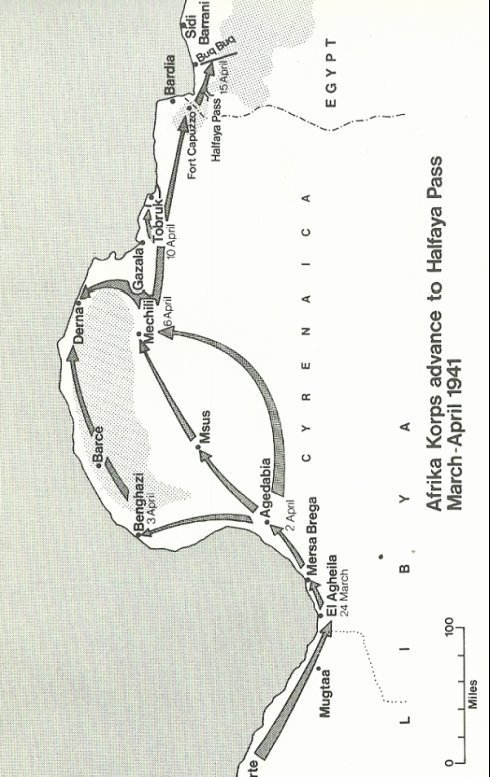
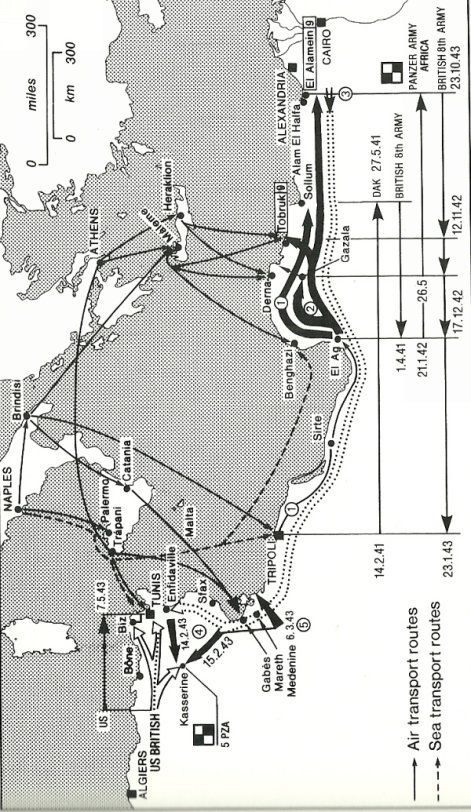
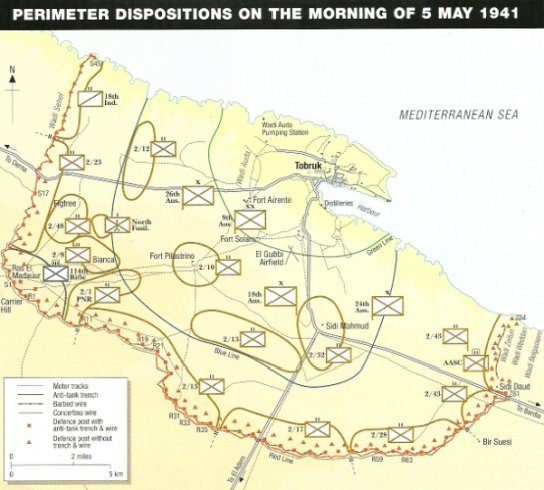
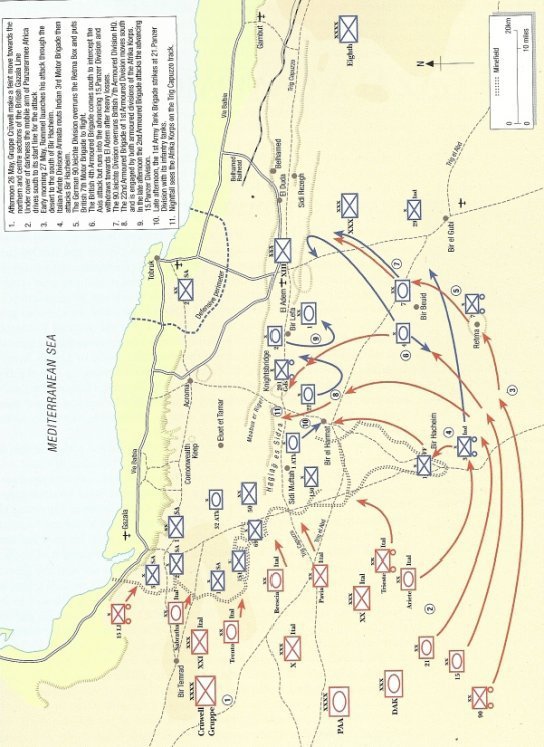
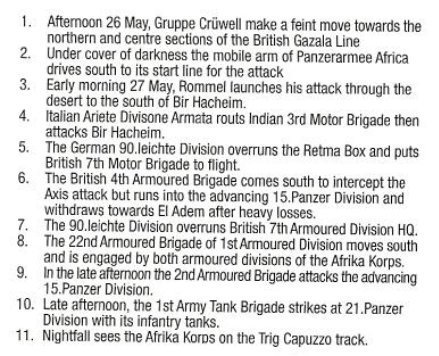
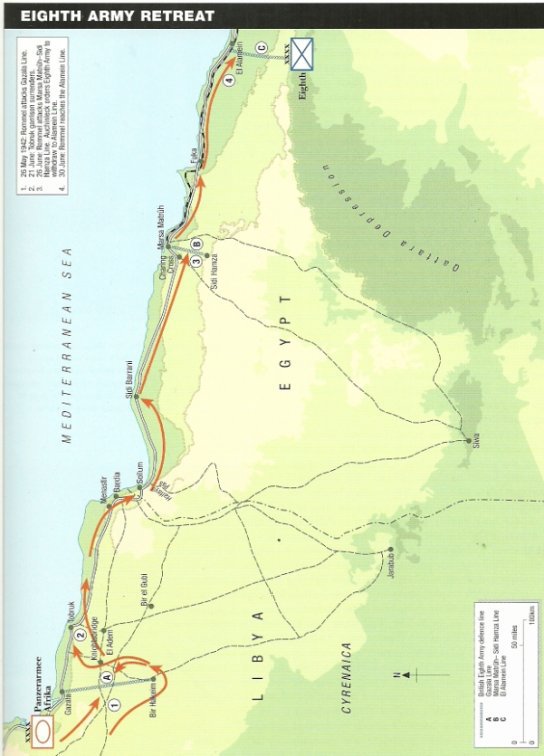
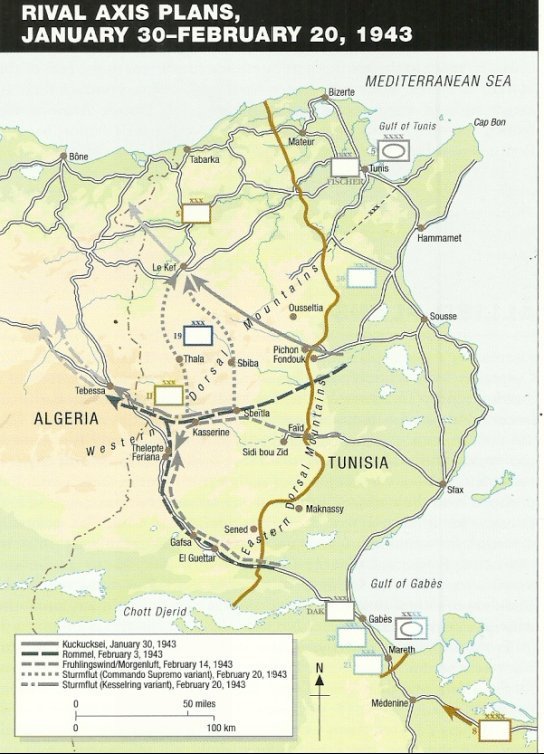
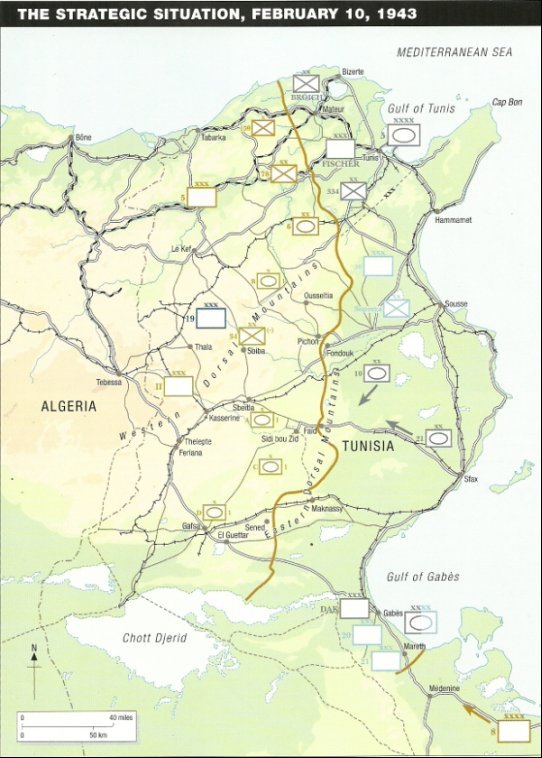
Rommel (Panzer Army Africa) 14 February 1941 arrives in North Africa with Deutsches Afrika Korps, abbreviated DAK, to oppose a British desert force (later British Eighth Army) under Field Marshal Wavell threatening Tripoli. Military operations extending over two years involve DAK and-ltalian units in heavy fighting, developing into a confrontation between Army Croups; Afrika - First Italian Army (formerly Panzer Army Africa) plus Fifth Panzer Army versus British 18th Army Group - First and Eighth Armies plus US (II) and a French Corps.
Despite a nominal military balance, the key to successful panzer action lies in supply facilities, but German-Italian sea and air transports running a Mediterranean gauntlet, rarely escape the punishing attention of naval and air attacks mounted from Malta or Alexandria - notwithstanding the aggressive presence of German 2nd Air Fleet based in Sicily. Hitler's shortsightedness over reinforcements for Rommel, coinciding with an OKW view that the theatre is a sideshow, invites disaster and his decision to cancel 'Hercules', a Luftwaffe plan for eliminating Malta by airborne invasion, will prove fatal. Rommel (1) (Panzer Army Africa) 31 March 1941.'Sunflower' slowly increasing in power is Rommel's first offensive with DAK, but instead of 'blocking' Wavell, Rommel outmanoeuvres Eighth Army to reach Sollum on the Egyptian border but is thrown back to El Agheila.
DAK 5 Lt Div vanguard/Ariete, two It inf divs; by 20 November 1941 DAK = 21st, 15th Pz, part 90th Lt Div, 178 Pz Kpfw lll-IVs X AirCorps, 50 Stukas plus fighters.
Rommel (2) (Pz-Army Africa) 21 January 1942. Rommel's second offensive 'Theseus', as a Gruppe with more Italian units, develops into 'Venezia' capturing Tobruk (map 9) before pushing on to Alam Halfa/EI Alamein. A shortage of supplies, offsetting Rommel's often brilliant tactics, cripples panzer operations.
Pz-Gr Africa DAK as hitherto. 'Ariete', 'Trieste', 'Littorio' (arriving) four other It. divs inc. Trento, 560 tanks (320 Pz Kpfws) (see map 9). II Air Corps-j 530 aircraft inc. 80 Stukas.
Rommel (3) Pz-Army Africa 23 October 1942. The 'Desert Fox', promoted Field Marshal after a triumph at Tobruk (map 9), is defeated at El Alamein - and turns about. Pz-Army Africa at Alamein; DAK plus 164th Lt Div, Para Bde (Ramcke), It. deployment as hitherto plus Folgore (Para) Div. 285 Pz Kpfws - reduced to twenty by 4 November 1942; 150 German aircraft.
A hazardous withdrawal, almost 2,000 miles via Tripoli into Tunisia, is followed by 'Springwind' an offensive involving both PzAOKS and DAK in counter-attacks against US forces at Kasserine. PzArmy Africa (Messe) meanwhile faces Montgomery at Mareth; Rommel is now GOC, Army Group Africa - promoted 23 February 1943.
Von Arnim (4) 'Springwind', Fifth Panzer Army 14 February 1943, involves 10th, 21st Panzer and a DAK battle group in attacks against US II Corps at Kasserine, but suffers from poor co-ordination. After early success against an inexperienced US defence, the attack is called off. A new plan follows.
Fifth Pz-Army At Kasserine (Gruppe Zeigler) 15th, 21st Pz; DAK Battle Group (Liebenstein), 164th Lt, Centauro.
Rommel, Messe (5) 'Capri', Pz-Army Africa 6 March 1943. At Medenine with Rommel's help Messe's Pz-Army Africa strikes at Eighth Army forming up to assault Axis positions at Mareth. Rommel expects to prevent a British First and Eighth Army link-up, but the attack fails and 'Supercharge II', a British armoured counter-strike turns the defence, forcing Pz-Army Africa into retreat.
At Medenine 15th, 21st, 10th Pz, 90th Lt - 141 Pz Kpfws. Messe Thereafter Pz-Army Africa renamed Italian First Army withdraws to Enfidaville fighting rearguard battles. All German and Italian forces in North Africa capitulate on 13 May 1943.
Army Gr Africa Rommel, after 9 March 1943 von Arnim; Fifth Pz-Army, and It. First Army: ten German divs (three pz), six It. divs.